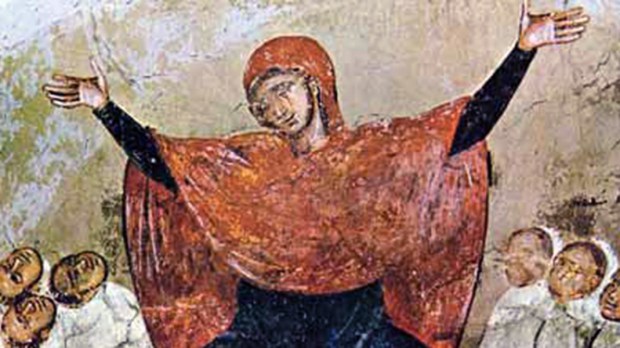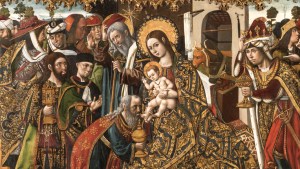We are familiar with the heartbreaking story of the first little ones who had to give their lives for Jesus: those known as the Holy Innocents, slaughtered because of Herod’s jealous rage.
One piece of the story that we might not pay much attention to is the prophecy that the Gospel of Matthew says is fulfilled. Matthew (chapter 2) quotes Jeremiah (chapter 31):
[Herod] sent and killed all the male children in Bethlehem and in all that region who were two years old or under, according to the time which he had ascertained from the wise men. Then was fulfilled what was spoken by the prophet Jeremiah: “A voice was heard in Ramah, wailing and loud lamentation, Rachel weeping for her children; she refused to be consoled, because they were no more.”
Rachel prefigures Mary
This Rachel is the mother of Joseph — the one with the coat of many colors. What’s fascinating about her is that she’s actually a prefigurement of Mary, the mother of Jesus.
The striking parallels are spelled out by Brant Pitre in his book Jesus and the Jewish Roots of Mary: Unveiling the Mother of the Messiah.
Pitre first explains who Rachel is in the Old Testament. As the beloved wife of Jacob/Israel, she is the mother of Joseph and Benjamin. She dies in giving birth to Benjamin, while the family is journeying, and when they happen to be near Bethlehem.
Rachel is not buried with the other mothers of Israel (Sarah, Rebekah) in the family tomb; instead, she is buried on the road near “Bethlehem”(Genesis 35:19).
Rachel as mother of Israel
This is important for Rachel’s role not only as mother of Joseph and Benjamin, but in fact, as “mother of all Israel, who somehow suffers with them and weeps for them, even after her death.”
The prophesy that Matthew quotes from Jeremiah is understood to point to Rachel’s link to her people during the time of the exile.
Pitre explains:
According to Old Testament scholars, the key to understanding this passage is to remember that Rachel’s tomb was located near the place where the exiles were taken captive by the Babylonians.
God hears Rachel’s lamentation as she “suffers” with her exiled people, and promises that her people will return to their land (Jeremiah 31:16).
Rachel, a Mother of Sorrows
So Rachel, in Jewish tradition, is a most powerful intercessor, who intercedes with the power of her motherly sorrow … just like Our Lady.
Now in the New Testament, we see that Rachel not only wept for her children who were in Babylonian exile near her tomb, but now weeps again, as more of her children are slain at the hands of Herod, again near her resting place.
A new Rachel
Mary’s role is that of a new Rachel, mother of her people, and powerful intercessor.
As the suffering mother of the persecuted Child who is driven into exile, Mary in Matthew’s Gospel is truly a new Rachel.
Indeed, on a very human level, it is easy to imagine Mary weeping not only for the persecution and exile of her own Son but for the lives of all the boys who were massacred in the attempt to kill her child.
Pitre’s book goes on to discuss other ways in which Mary and Rachel are linked, calling on Revelation, and also on the figure of the “beloved son” and his parallel with the “beloved disciple.”



